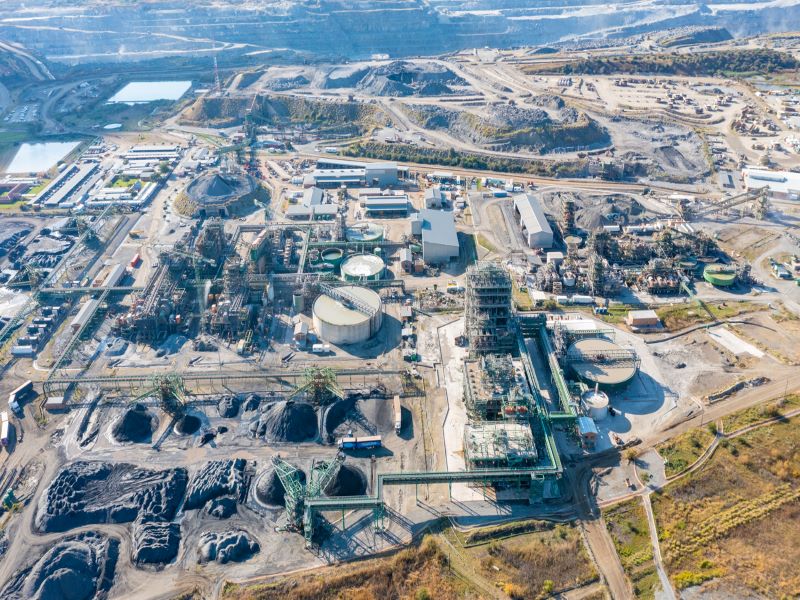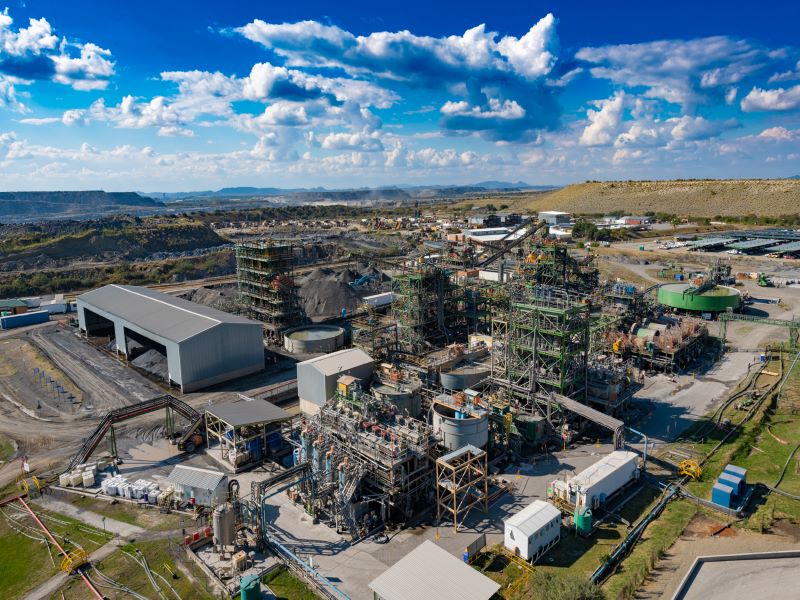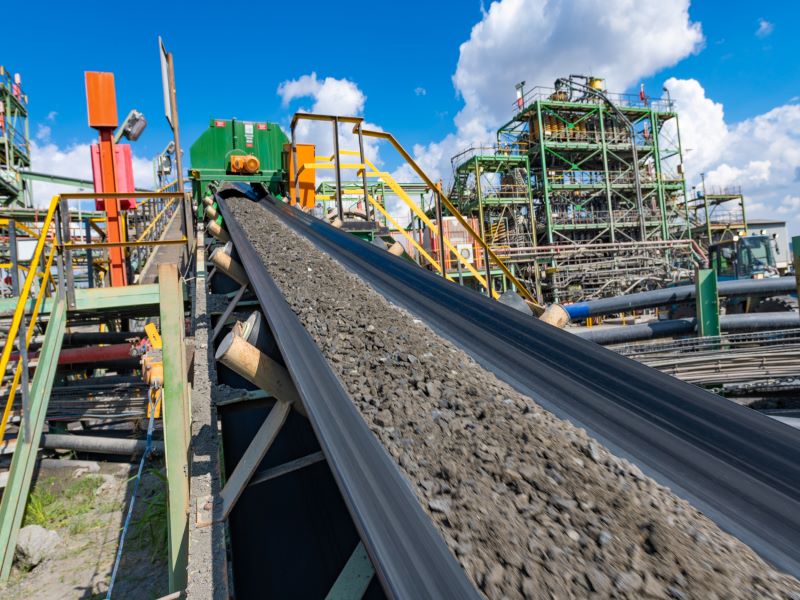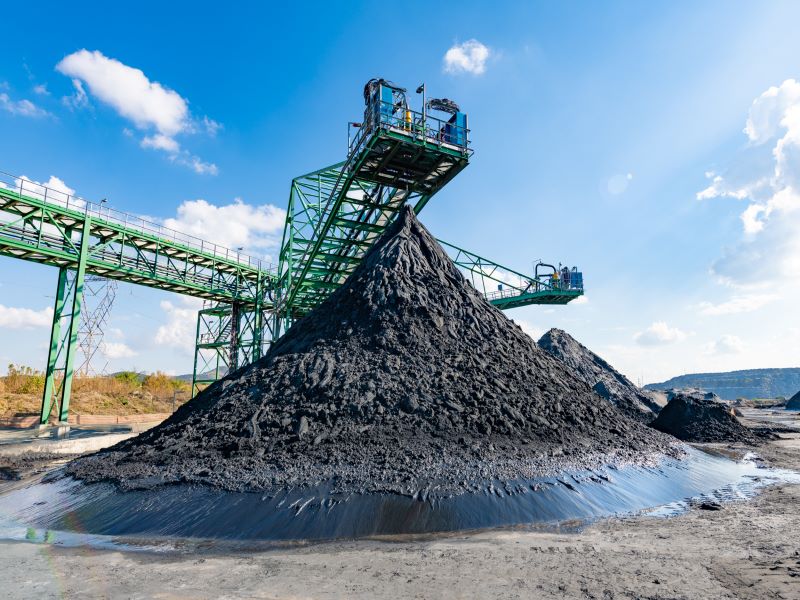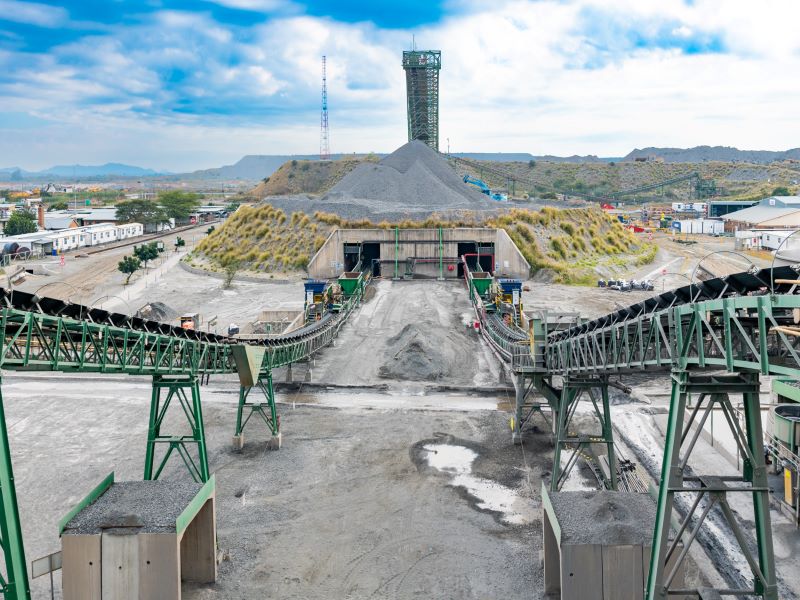The Tharisa mine is an open-pit platinum group metals (PGM) and chrome mining operation in the North West province of South Africa.
It is operated by Tharisa Minerals, a subsidiary of European integrated resource company Tharisa.
The mining rights for the property were awarded by the Department of Mineral Resources and Energy (DMRE – formerly the Department of Minerals and Energy or DME) for an initial 30-year period in September 2008. Production of the first chrome concentrate started in November 2009.
Tharisa announced in November 2021 that the open-pit PGM mining operations will continue until 2041 due to an increase in reserves, according to the September 2021 mineral resource and mineral reserve estimates.
The open-pit life of mine (LOM) increased by seven years from 13 to 20 years while the underground operation, which will follow the open-pit operation, will have a LOM of 40 years.
The company began an 18-month operational testing of three Liebherr diesel-electric mining machines at the Tharisa mine in March 2022, as part of an initiative to reduce carbon footprint and fuel consumption. The two 100t T 236 mining trucks and a 72t PR 776 dozer are equipped with more efficient engines and fuel systems.
The Tharisa mine produced 157,800oz of PGM and 1.51 million tonnes (Mt) of chrome concentrate in 2021.
Ownership details of the Tharisa mine
Tharisa had acquired 74% of the equity capital of Tharisa Minerals in March 2009. The company signed an agreement with black economic empowerment (BEE) shareholder Thari Resources to acquire its 20% shareholding in Tharisa Minerals in February 2022. The unconditional transaction increased Tharisa’s interest in Tharisa Minerals to 94%, effective February 2022.
Another agreement was signed to acquire the remaining 6% interest held by The Tharisa Community Trust. The acquisition was completed in May 2022.
Tharisa mine location and geology
The Tharisa mine is located 35km east of Rustenburg and 120km north-west of Johannesburg.
The mining licence for the property encompasses an area of 5,475ha in the southwestern limb of the PGM, chromium and vanadium-rich Bushveld complex.
The mine is underlain by the MG (middle group) and UG (upper group) chromitite layers across the Marikana and Rustenburg facies.
Mineralisation and reserves of the Tharisa mine
The MG chromitite mineralisation at the project occurs in five layer groups, which are a typical stack of tabular deposits.
They comprise Chromitite layer MG0 at the bottom, followed by MG1, MG2, MG3 and MG4 layers. MG2 is sub-divided into A, B and C layers while MG4 is sub-divided into 4(0), 4 and 4A. Stringers or disseminations of chromite are found between the chromitite layers.
The proven open-pit and underground mineral reserves at the Tharisa mine were estimated at 83.4Mt, grading 1.43g/t 5PGE + Au (platinum, palladium, rhodium, ruthenium, iridium and gold), 1.11g/t 3PGE + Au (platinum, palladium, rhodium and gold), and 18.7% chromium oxide, as of September 2021.
The South African PGM mine is expected to hold probable open-pit and underground reserves of 29.7Mt grading 1.45g/t 5PGE + Au, 1.11g/t 3PGE + Au, and 18.7% chromium oxide.
Mining at Tharisa mine
The Tharisa mine is currently operated as an open-pit mine with a remaining LOM of 20 years. The open-pit mining operation comprises the east and west pits, which extract reef from the five MG chromitite layers.
The mine transitioned from contract mining to an owner mining operation in 2017. The open-pit operations were redesigned in 2019, which improved the performance of the mine on nearly all metrics in 2020 and 2021.
The transition to the proposed underground expansion of the mine is expected to be implemented in two stages. The east open pit will start underground operation from 2036 while the west pit is expected to adopt underground mining from 2041. This coincides with the final year of production of run-of-mine material from the open-pit operations.
Processing
The Tharisa mine operates two independent processing plants namely Genesis and Voyager, designed specifically to treat the MG chromitite layers to produce both PGM and chrome concentrates.
The targeted recoveries are 85% for PGMs and 65% for chrome. The 100,000 tonnes per month (tpm) chrome circuit of the Genesis plant was commissioned in August 2011 while the PGM circuit was commissioned in December the same year.
Commissioned in December 2012, the larger Voyager plant has a nameplate capacity of 300,000tpm. The two plants have a combined nameplate capacity of 4.8 million tonnes per annum (Mtpa).
The Challenger integrated beneficiation plant, which serves as the feed circuit of the Genesis plant, is used for processing specialty-grade material. Commissioned in July 2013, it produces chemical and foundry-grade chrome concentrates.
The Genesis and Voyager plants adopted crushing and grinding, as well as primary removal of chrome concentrate by spirals. The PGM concentrates are recovered from the chrome tails using flotation, while chrome is recovered from the PGM tailings by a second spiral stage.
The two plants operate in parallel and provide the flexibility for one plant to continue operating while the other is shut down.
Voyager produces a higher-grade PGM concentrate when compared to Genesis.
A new processing facility, named Vulcan, was cold commissioned in October 2021. The fine chrome recovery plant was developed with the objective of processing live tailings from the Voyager and Genesis plants. The new processing plant is also claimed to be the first large-scale plant to process chrome concentrates to produce chrome ultra-fines.
It is expected to increase the mine’s chrome recovery rate by about 20% from 62% to 82% when fully commissioned. Vulcan is also expected to reduce carbon emissions at the mine.
Solar power generation at Tharisa mine
Total Eren, a France-based renewable energy generation company that is partially owned by TotalEnergies (30%), and Chariot signed a memorandum of understanding (MoU) with Tharisa to build a solar photovoltaic (PV) project to supply electricity to the Tharisa mine in February 2022.
The MoU requires the partnership between Total Eren and Chariot to develop, finance, construct, own, operate and maintain the solar plant at the mine site.
The proposed solar project is expected to have an initial generation capacity of 40MWp, which is expected to increase over the life of the Tharisa mine.
Contractors involved
MCC Contracts served as the mining contractor for the Tharisa mine prior to its transition to owner-operated mine model in 2017. Tharisa also purchased the mining equipment from MCC and took over 900 MCC employees who were working at the mine.
MDM Engineering Group, part of Sedgman, received an engineering, procurement and construction (EPC) contract for the 3.6Mt expansion of the Tharisa mine in 2011.

